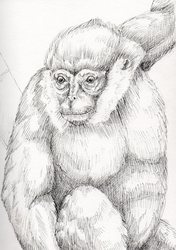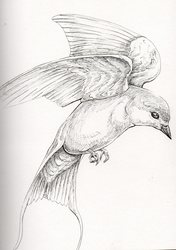Sign In
CloseTotem of the day is Muskrat! Take time in meditation or silent contemplation to work within yourself to restore and heal your mind and body. You may have out-of-body experiences in the coming time, but do not let it worry you. It may help you to keep a journal to record any dreams right in the morning so you can look back and reflect on what they mean. Make sure to pay attention to what you can hear and even smell in any communications that you are in for this will help to understand any underlying meanings within it. Working from one room to another, declutter your environment by spending time cleaning. The muskrat spirit guide is known for it's connection to organization, cooperation, emotions, and properly using resources. When Muskrat appears, it can often be a reminder to clean through your environment to reuse or recycle anything that you don't need anymore. Due to their connection to water, Muskrats teach us to work on controlling and moving with the flow of our emotions. We are reminded that we can face any challenge and still return home. Muskrat can be found in various Native American tribes as an Earthdiver, the only animal successful at diving to the bottom of the ocean in order to bring up Earth to create land. They were seen as signs of luck with some folktales telling of Muskrats gifting wealth or hunting success on those that treated them with respect. People who connect with Muskrat often require living close to a source of water and are often adept swimmers. These individuals are often well organized and very clean. At times, they may get so wrapped up in a creative project that the rest of the world falls away. Family is important to these types even when they may squabble now and then.
Muskrat, Ondatra Zibethicus, are omnivorous rodents that can live up to 3 years in the wild and up to 10 years in the wild. Being a member of the rodent family, they are related to rats, gerbils, lemmings, and other rodents. They can be found throughout North America as a native animal, however, have also been introduced into northern Eurasia and can now be found throughout Russia and Ukraine as well as areas of China and Mongolia. An adult Muskrat grows to approximately 25 inches long, weighing up to 4 lbs, and with a tail that can grow up to an additional 11 inches. These semi-aquatic rodents require a home with at least 4 to 6 inches of water and will prefer areas such as swamps, wetlands, and marshes. A muskrat will avoid hot, dry areas or weather and so will build burrows along the banks of their preferred water source. At times, they will also build lodges out of vegetation such as cattails along waterways. In order to help stay cool, muskrats have a special adaptation called regional heterothermia in which the flow of blood is regulated to the feet and tail in order to keep them cooler than the core of their body. In addition to this, Muskrats are generally nocturnal. Although active during the day sometimes, they become most active during the cooler times of late afternoon and night time. These excellent swimmers are able to hold their breath up to 17 minutes. Their small ears help to keep water out and their dense fur traps air to aid in keeping them from getting too cold and to help them float. A muskrat's long, flattened tail propels them easily through water with the aid of their paddle-like, webbed feet. These animals can even swim backwards. The diet of a muskrat consists of nearly anything. They prefer to eat plant materials such as waterlillies, pondweed, roots, and cattails, but will also consume meats such as salamanders, fish, young birds, crustaceans, and mussels. When necessary, they have been known to resort to cannibalism. A single muskrat will eat up to a third of their weight each day, although they don't travel much further than a hundred feet from home. Muskrats are highly social, living in large families that work together to mark their territory. When breeding, they will sometimes build nests on tree stumps sticking out of the water in which the female will give birth to between 3 and 8 babies called kits. These kits grow fast, able to swim, dive, and feed themselves after only 30 days. At 6 weeks, the kits are fully grown and will continue to live with their family unit unless kicked out by the mother due to overcrowding.
Submission Information
- Views:
- 3222
- Comments:
- 0
- Favorites:
- 1
- Rating:
- General
- Category:
- Visual / Traditional




